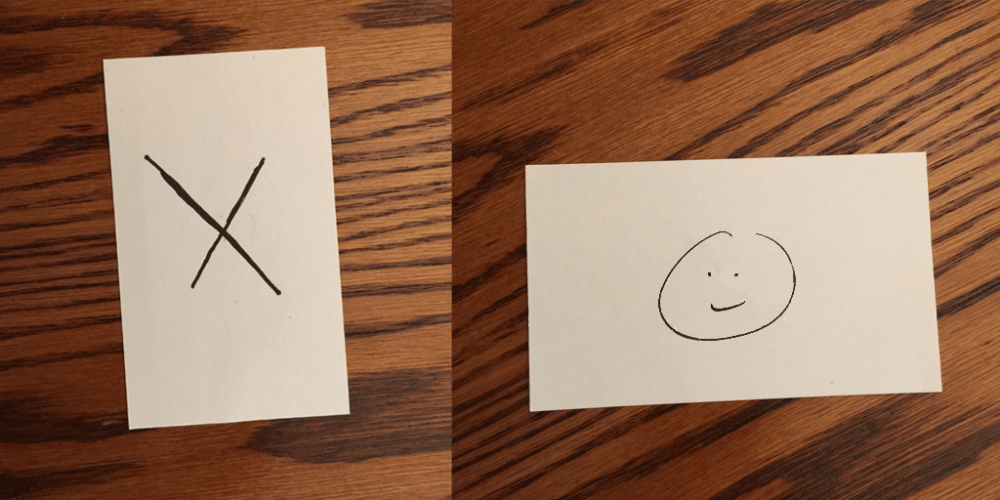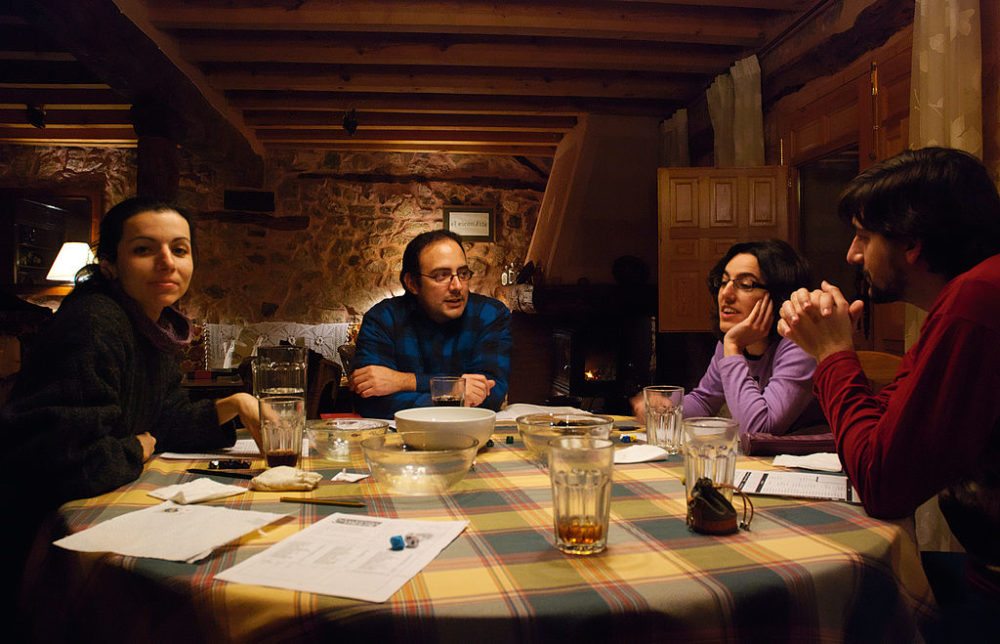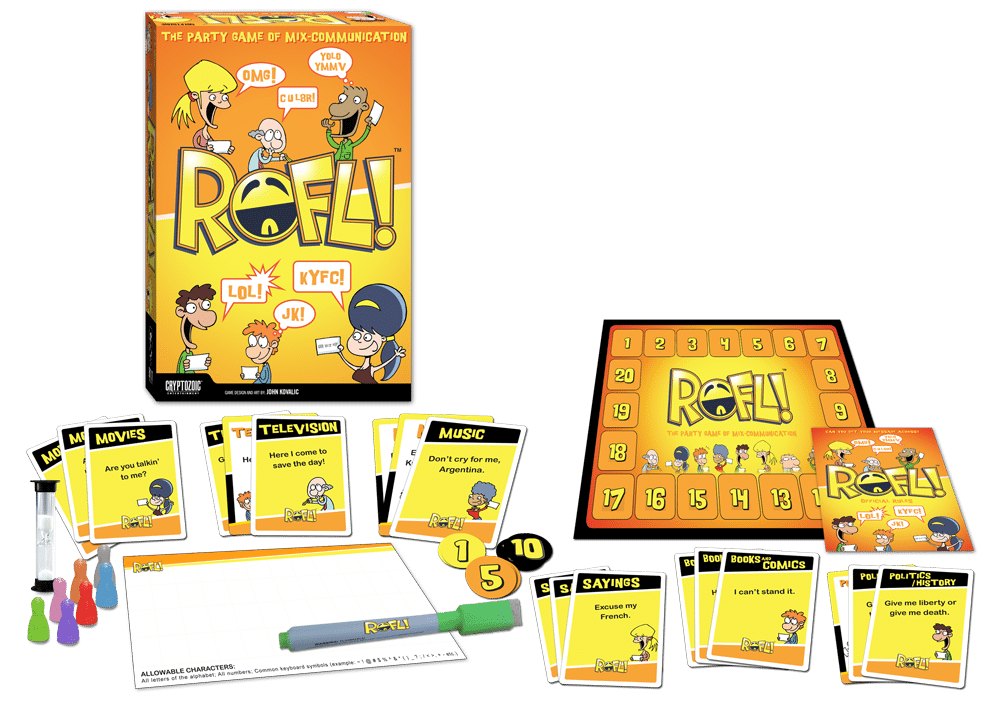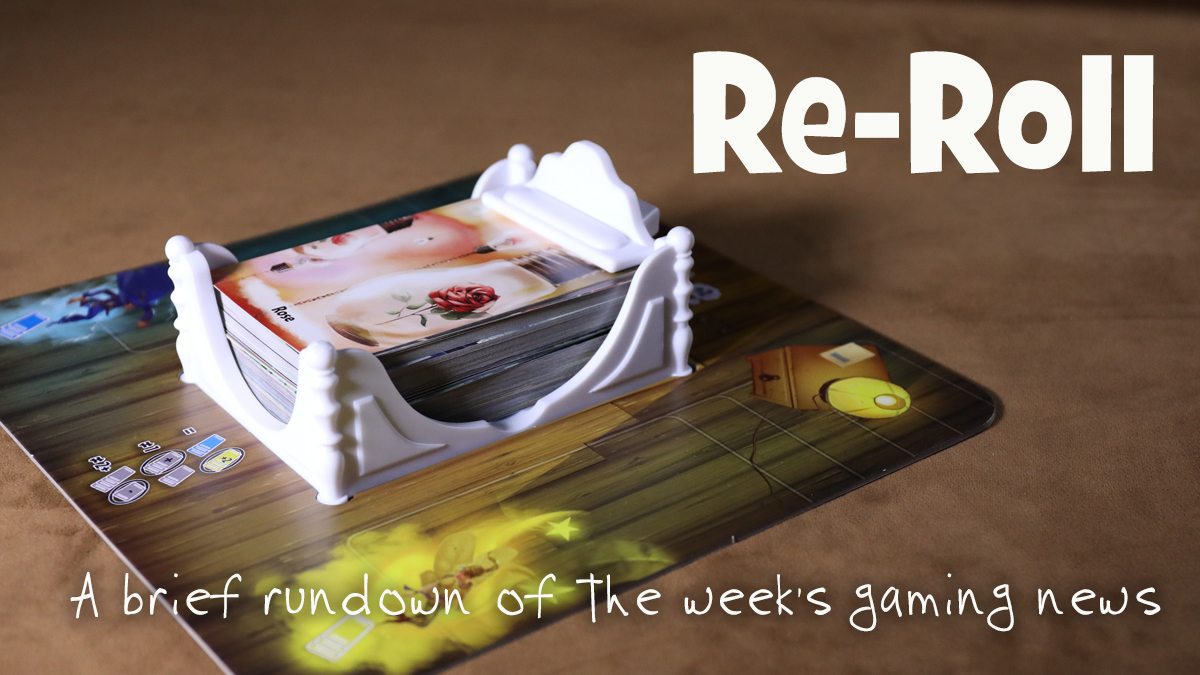
For many veteran players, violence, gore, and the darkest of themes in RPGs are old hat. We know it’s coming, we know we can overcome it, and it’s often what drives us to adventure. But what if the details make your player uncomfortable? How do you know if you’ve gone too far with your table? Communication is what makes a story work. I’d like to introduce a tool to make your story phenomenal: The X-Card.

What is the X-Card?
The X-Card is an index card with an X drawn on one side. The variant I use also has an O on the other side, as pictured above. When a player is uncomfortable with the content for any reason (including phobias, PTSD, and/or many more), they tap the card, or hold it up to show the DM. If the DM is confident that they know why they should move on, they do so. If I don’t know why, I might skip ahead to move things on, or I pull the person aside for clarification. If they flash the O side, I make a note to include more content in that vein.
When should the X-Card be used?
The X-Card should be used by a player when they feel uncomfortable, no matter the reason. I’ll give some specific example, but they may be upsetting, so please read the hidden content only if you’re okay with stronger content. Each of these comes from gaming sessions that came to a halt because I didn’t know my players’ needs.

How do we DMs tell a great story with our creativity stifled‽
From the Premier DM of the Year, David “Oak” Rice:
I do not need to describe how sex works, how violence works, or how horrifying the [graphic content is] for you to understand what just happened. These cards draw a line that you can build from. For some players, and some groups, going all the way is fine. For others they need a line. This tool assists in that endeavor, and I highly recommend it’s use.
Defeating the evil lords of the Underdark feels just that much more victorious when we know about the vile acts these people commit. We are able to feel the righteous zeal of victory when we eliminate these threats to civilization. It’s understandable that a DM wants to build a dark world for their players to adventure through. Thankfully, the DM doesn’t have to give that up when using the X-Card.
As a DM, I write the stories, I’m good at telling them, and there are 1,025,109.8 words in the English language. I have every advantage in the world when creating my adventures. An X-Card consideration is peanuts to a good DM. When I design a grisly den, I consult my players’ X-Card sheets. (link below) From there, I create the world I want while considering the needs of my players. If needed, I problem-solve.
If my player can’t do spiders, I replace spiders with rats, and webs with decrepit fabric like curtains, banners, etc. If my player needs bare-bones visual descriptions of a building, I can still add context and description by describing furnishing, lighting, sounds, smells, etc.
Communication:
Communication makes your world work. If your players are distracted, they aren’t in the game. If they’re upset, scenes come to a crawl (if not a halt) while they calm down/re-engage. The X-Card helps a DM consider the needs of their group with a concise and simple tool. By the same token, players who really dig freeing slaves can flash the O, and I now have a new hook for the future. I make note of that on their sheet, and everyone benefits. My worlds are better for my players. My players feel safer, and engage emotionally, a mark of a successful night at the table.
The bottom line:
As ever, do what works for your players. A campaign where everyone is engaged will last longer and be more fun for everyone. Do what’s best for your table, and if the X-Card can help even a little, put it to use, and everyone wins.
The X-Card was created by Jon Stavropoulos, and is entirely in Creative Commons. You can see the official documentation here. The sheet I give my players can be found here.




So wait, does it mean everyone else in the group must conform to the idiosyncrasies of one player?
Yes, in a way, it does. As a player and DM with PTSD, this has been invaluable. It means I can play. D&D is a community game, and the best way to guarantee a fun game is to make sure the community works.
If a player or DM doesn’t want to use this tool, that’s fine. They can run with a different group. My group uses the X-card, and everyone at the table is fine with it. Nobody is forced to play a character they wouldn’t normally play. Nobody is forced to tell a different story. The story is just approached differently.
Sex and rape is done off-scene. It might still happen, but nobody at the table needs gruesome details. Corpses of children are omitted from explicit description, but a scene description might include “the bodies of villagers of all ages.”
Nobody NEEDS these story elements to be explicit. They are gratuitous and damaging to the game IF it knocks some of the players out of the story. Smooth story telling is a vital part of an ongoing campaign, and the X-card makes that possible for some groups.
__
I came back to this to emphasize: This isn’t a matter of idiosyncrasies. It’s a matter of mental health and community. If the table doesn’t work, there’s no game.